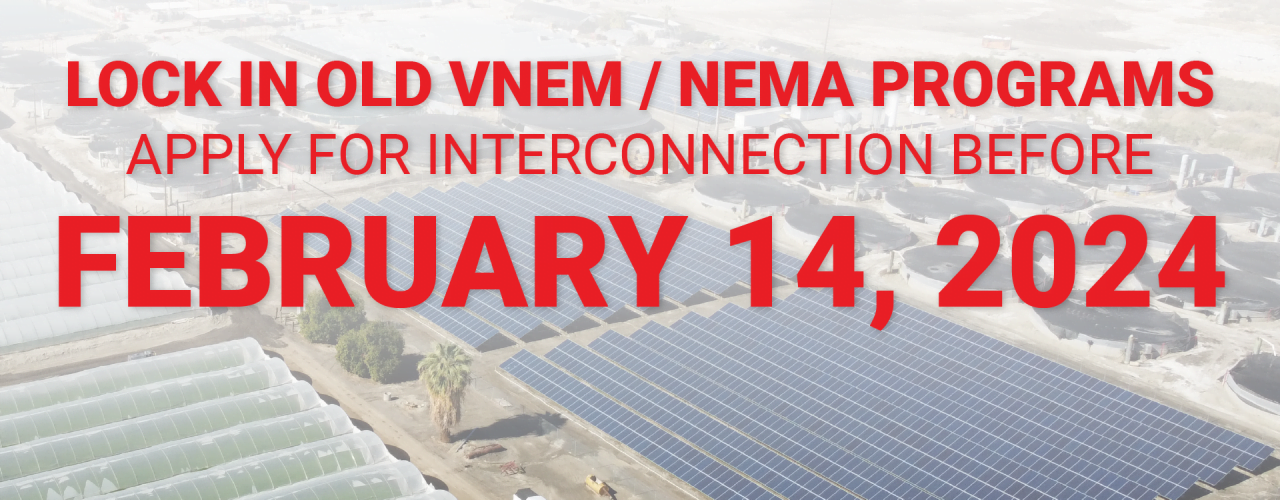Understanding NBT-A & V-NBT Introduction in 2024
Navigating California's Evolving Solar Energy Programs
The California Public Utilities Commission (CPUC) has recently made significant changes to the solar energy landscape in California. On November 16, 2023, the CPUC voted to revise the Virtual Net Energy Metering (VNEM) and Net Metering Aggregation (NEMA) programs in California, transitioning them to Virtual Net Billing Tariff (V-NBT) and Net Billing Tariff Aggregation (NBT-A), respectively. These revisions align with the CPUC’s broader efforts to adapt to a rapidly evolving solar industry and to address the challenges and opportunities presented by new net billing frameworks, similar to the changes made to NEM / NB programs in 2022.
The Rising Electricity Rates and Solar Energy
As of January 2024, Pacific Gas & Electric (PGE) customers will face increased rates. This rate hike approved by the CPUC underscores the importance of solar energy as a means to combat rising electricity costs for California businesses, with changing V-NBT and NBT-A programs. The solar industry is poised to continue its growth, adapting to these new frameworks that emphasize cost-effective and sustainable energy solutions.
Virtual Net Billing Tariff (V-NBT)
V-NBT, or Virtual Net Billing Tariff, is the successor to the VNEM program, designed specifically for nonresidential customers. It includes several critical implementation steps as outlined by the CPUC. A notable change is the elimination of netting for commercial customers, meaning all exports to the grid will receive avoided cost-based export compensation, and imports will be charged at the applicable import retail rate.
- Sunset Period: The current VNEM program will sunset no later than 90 days from the CPUC’s decision, with February 14, 2024, set as the final day to apply for interconnection under the old program.
- Interconnection Process: Nonresidential customers must submit a complete application, including necessary documentation such as a single-line diagram and an oversizing attestation, if applicable.
- Transition to V-NBT by 2025: Utilities are directed to transition to full implementation of V-NBT, aligning their billing systems and preparing for the new tariff structure.
Net Billing Tariff Aggregation (NBT-A)
NBT-A, or Net Billing Tariff Aggregation, evolves from the NEMA program and is geared towards optimizing land use for solar generation. It is designed to be more affordable than the current NEMA subtariff and is particularly beneficial for businesses with multiple meters on adjacent properties.
- Affordability and Land Optimization: NBT-A allows for onsite generation installation for customers with multiple meters on contiguous properties, offering a combination of high differential time-of-use import rates and cost-based export compensation.
- Full Implementation by 2025: Utilities have specific deadlines to fully implement NBT-A, with detailed plans for the aggregation subtariff and billing system alignments.
Opportunities for California Businesses
The shift from retail rate-based to avoided cost-based export compensation, along with the elimination of netting, presents both challenges and opportunities. While it will impact the financials of solar projects, it also provides a chance for businesses to reassess their strategies, particularly in terms of sizing and siting of installations.
The longer lock-in period and glide path introduced by the new tariffs offer some predictability and stability, which is crucial for businesses planning their energy strategies. With electricity rates on the rise, solar energy presents a viable solution for businesses to control their energy costs effectively. Businesses have a limited window to benefit from the existing VNEM and NEMA programs before they transition to the new V-NBT and NBT-A frameworks with the February 14, 2024 deadline.
The CPUC’s revisions to the solar tariff programs reflect the dynamic nature of the solar industry in California with new V-NBT & NBT-A programs. While these changes introduce new complexities, they also offer significant opportunities for businesses to leverage solar energy as a strategic tool against rising electricity rates. Businesses are encouraged to act swiftly to explore these opportunities and align their energy strategies with the evolving solar landscape in California.
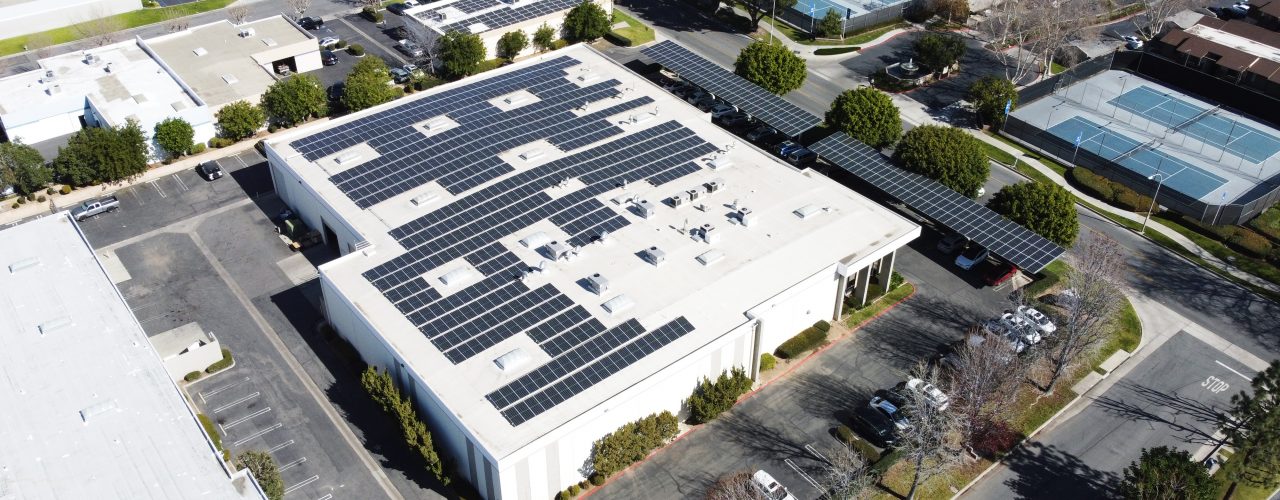
Commercial grade rooftop solar is ideal for: manufacturing, warehousing, logistics, industrial, retail, hospitality buildings and more with over 10,000 sq. ft. rooftops.
CARPORT SOLAR
Free standing carport solar generates added solar power for properties with limited rooftop space. Added benefits include shading and protection for employees vehicles.
Crucial for reducing peak demand charges. Automated to supply electricity when your panels won’t. Energy storage is ideal for businesses that incur significant peak charges.
As the popularity of electric vehicles increase, so does the demand for on-site charging. This sustainable amenity has become a parking lot fixture for competitive employers.
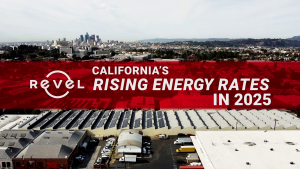
2025 Energy Costs in California: Why Now Is the Time to Go Solar

Future-Proof Your Business: Leveraging the Solar ITC for 2025 Tax Relief


How to Choose the Right Commercial Solar Contractor
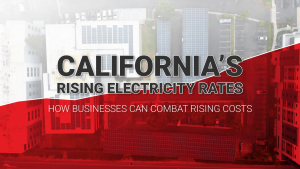
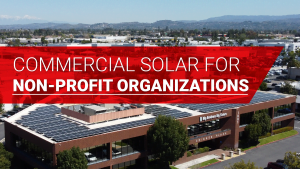
OUR SERVICES
TURNKEY COMMERCIAL GRADE SOLAR, ENERGY STORAGE, LED LIGHTING AND MORE.
PROFESSIONAL GUIDANCE
CUSTOM TAILORED PLANNING
CONSTRUCTION & INSTALLATION
CSLB #1106092
Client Testimonial: Kelemen Company
Corporate Business Park in Irvine, CA has created significant electricity cost savings through commercial solar installed across the 5-building business park.
Client Testimonial: Tice Gardner & Fujimoto LLP
See how this CPA firm saved on electricity and gained valuable tax credits through commercial solar that they used to keep cash in the businesses.

